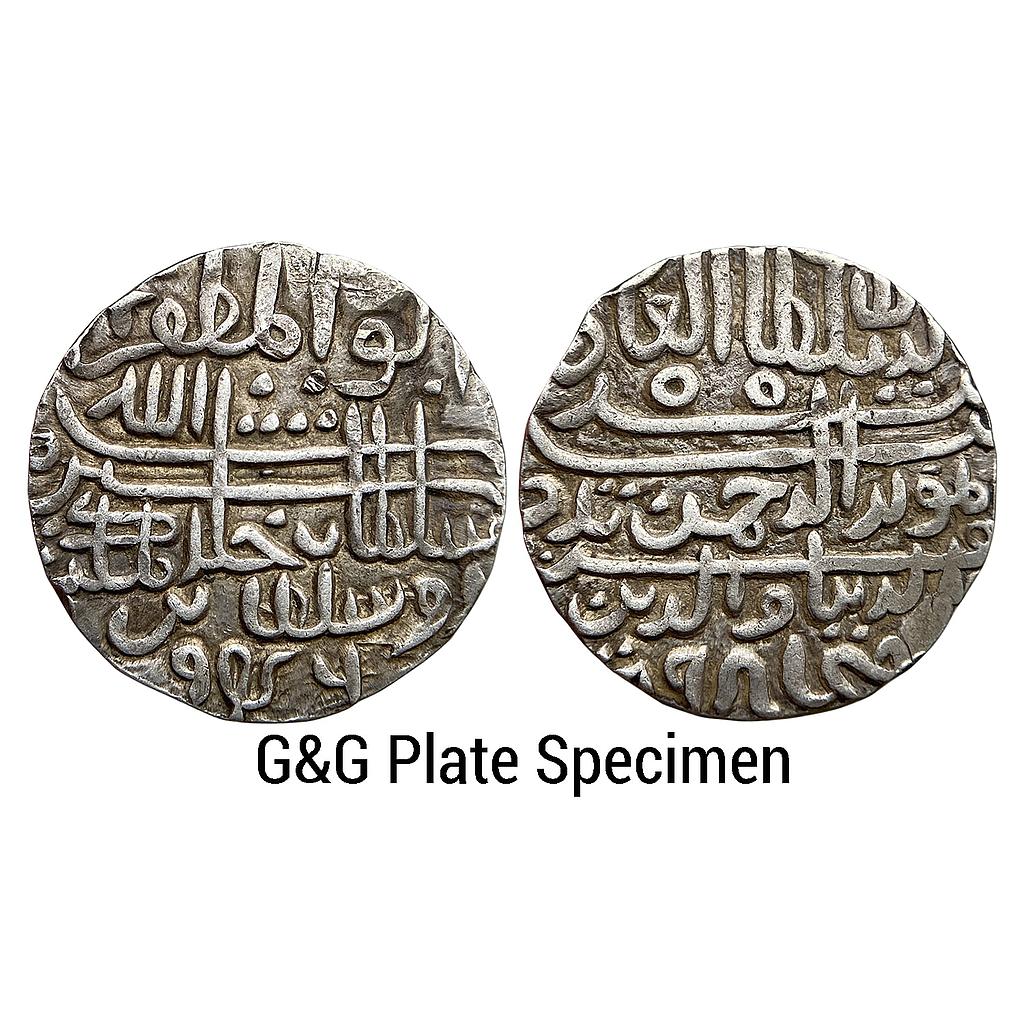Lot 64
Delhi Sultan Sher Shah Suri Fathabad Mint Silver Rupee tughra style G&G Plate Specimen Extremely Rare
Auction # 13 Lucknow (Online)
- Estimated Price (INR)
- 175000 - 185000
- Price Realised -
-
Auction Completed!
- Catalog Reference #
- G&G # D761
- Metal Composition
- Silver
- Lot Grade/Condition
- very fine+
- Diameter
- 23.66 mm
- Weight
- 11.52 gms
- Denomination
- Rupee
- Calendar/Year
- AH 945-952, 1538-1545 AD
Delhi Sultan, Sher Shah Suri (AH 945-952, 1538-1545 AD), Silver Rupee, 11.52 gms, 23.66 mm, Fathabad Mint (fully visible at bottom on rev) from 5 to 6 o'clock, AH 946, G&G # D761, very fine+, an early issue with the attractive tughra-style. G&G Plate Specimen, an extremely collectible coin, missing in all major collections. extremely rare.
In 1534 AD, the Afghan Sher Shah Suri, or Farid Khan — a man of incredible military and political skill — succeeded in defeating the superior forces of the Mughals under Humayun at Chausa (1539) and Kannauj (1540). Sher Shah fought back and captured both Delhi and Agra as he established the most powerful Bengali kingdom that would ever exist, stretching far into Panjab. Sher Shah's administrative skill showed in his public works, including the Grand Trunk Road connecting Sonargaon in Bengal with Peshawar in the Hindu Kush. Sher Shah's rule ended with his death in 1545, although even in those five years his reign would have a powerful influence on Indian society, politics, and economics.
Fatehabad is a historical pargana (a division of a district ) in Bengal, The Greater Faridpur region was once under ancient Kingdom of Gangaridai. Later it was ruled by local Muslim sultans and Hindu rajas until the Mughal conquest of Bengal in the 16th century, after which many nobles and merchants from North India settled in the area. In 1582 in the reign of Emperor Akbar, the province of Bengal was formed into 33 sarkars or financial sub-divisions, and Faridpur area appears to have been included within the sarkar of Muhammad Abud and was known as Fatehabad. In 1765 the British took over the financial administration of Faridpur, together with the rest of Bengal. The greater portion of Faridpur was then comprised within Dhaka District. In 1811 Faridpur was separated from Dacca collectorate. The district was initially known as Fatehabad. Under British rule in 1860, the district was named as Faridpur after 12th-century Sufi saint, Shah Sheikh Fariduddin. In 1984, with the Decentralization Program of the Bangladesh government, Faridpur district was reorganized into five separate districts: Rajbari, Gopalgonj, Madaripur, Shariatpur and Faridpur.
